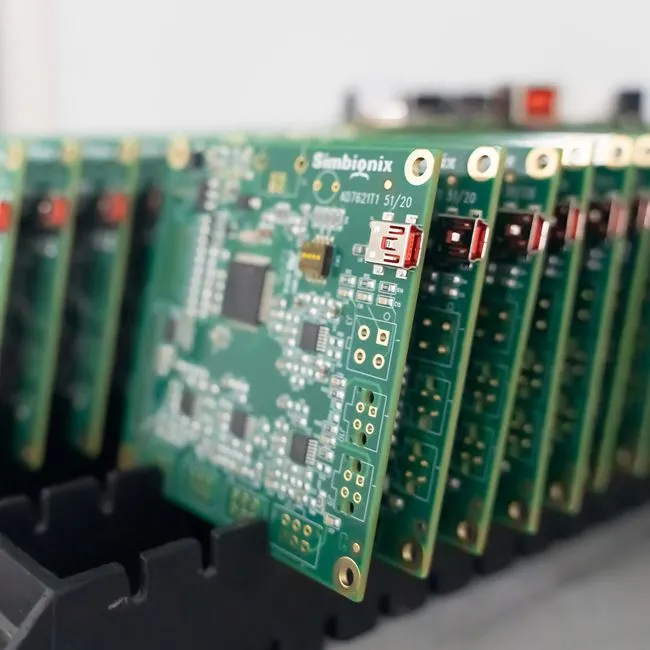The Power of Integration: One-Stop PCB Assembly Explained
Understanding One-Stop PCB Assembly
One-Stop PCB Assembly is a comprehensive service that combines multiple stages of the electronics manufacturing process into a single, cohesive operation. This integrated approach encompasses everything from PCB design and fabrication to component procurement and final assembly. By consolidating these services, manufacturers can significantly reduce the time and complexity involved in bringing a product to market.
The core components of a One-Stop PCB Assembly service typically include:
- PCB design and engineering support
- PCB fabrication
- Component sourcing and management
- Surface Mount Technology (SMT) assembly
- Through-hole assembly
- Quality control and testing
- Final product packaging and shipping
This holistic approach eliminates the need for multiple vendors and the associated communication and logistical challenges, streamlining the entire production process.
Benefits of One-Stop PCB Assembly for Time-to-Market Reduction
The adoption of One-Stop PCB Assembly offers several key advantages that directly contribute to reducing time-to-market:
- Simplified Communication: With all services under one roof, there's a single point of contact for the entire project, reducing miscommunication and speeding up decision-making processes.
- Streamlined Logistics: Eliminating the need to coordinate between multiple vendors reduces shipping times and associated delays.
- Concurrent Engineering: Design, fabrication, and assembly teams can work in parallel, identifying and resolving issues early in the development cycle.
- Rapid Prototyping: Quick turnaround on prototypes allows for faster iteration and refinement of designs.
- Efficient Scaling: Seamless transition from prototyping to full-scale production without changing suppliers or processes.
- Consistent Quality Control: Unified quality standards across all stages of production ensure fewer defects and reworks.
These benefits culminate in a significantly reduced time-to-market, allowing companies to respond more quickly to market demands and outpace their competitors.
Implementing One-Stop PCB Assembly in Your Production Process
Selecting the Right One-Stop PCB Assembly Partner
Choosing the right partner for One-Stop PCB Assembly is crucial for maximizing time-to-market reduction. Consider the following factors when evaluating potential providers:
- Technical Capabilities: Ensure the provider has the necessary equipment and expertise to handle your specific PCB requirements, including layer count, board size, and component complexity.
- Quality Certifications: Look for certifications such as ISO 9001, IPC standards compliance, and industry-specific qualifications like IATF 16949 for automotive electronics.
- Supply Chain Management: Assess the provider's ability to source components efficiently and manage inventory to prevent production delays.
- Design for Manufacturing (DFM) Support: A partner with strong DFM capabilities can help optimize your designs for manufacturability, reducing potential issues and delays.
- Scalability: Ensure the provider can accommodate your production needs as they grow, from small prototype runs to high-volume manufacturing.
- Communication and Collaboration Tools: Look for providers that offer robust online platforms for project management, real-time updates, and seamless communication.
Preparing Your Organization for One-Stop PCB Assembly
To fully leverage the benefits of One-Stop PCB Assembly, your organization may need to adapt its processes and mindset:
- Streamline Internal Processes: Review and optimize your internal design and approval processes to align with the faster pace of One-Stop PCB Assembly.
- Foster Cross-Functional Collaboration: Encourage closer cooperation between design, engineering, and procurement teams to take advantage of concurrent engineering opportunities.
- Embrace Design for Manufacturing: Train your design team on DFM principles to create PCB designs that are optimized for efficient production from the outset.
- Develop Clear Communication Protocols: Establish clear channels and procedures for communicating with your One-Stop PCB Assembly partner to ensure smooth information flow.
- Implement Agile Project Management: Adopt agile methodologies to better respond to the rapid iterations and quick turnarounds enabled by One-Stop PCB Assembly.
By preparing your organization in these ways, you can maximize the time-to-market reduction benefits of One-Stop PCB Assembly and create a more responsive and efficient product development cycle.
Maximizing Time-to-Market Reduction with Advanced One-Stop PCB Assembly Techniques
Leveraging Advanced Technologies in One-Stop PCB Assembly
To further accelerate time-to-market, cutting-edge One-Stop PCB Assembly providers are incorporating advanced technologies into their processes:
- AI-Driven Design Optimization: Machine learning algorithms can analyze and optimize PCB designs for manufacturability and performance, reducing design iterations.
- 3D Printing for Rapid Prototyping: Additive manufacturing techniques allow for quick production of PCB prototypes and enclosures, enabling faster design validation.
- Automated Optical Inspection (AOI) and X-ray Inspection: Advanced inspection technologies ensure high-quality production with minimal defects, reducing the need for time-consuming manual inspections and reworks.
- Digital Twin Technology: Creating virtual replicas of PCBs and assembly processes allows for simulation and optimization before physical production begins.
- Industry 4.0 Integration: Smart factory concepts with real-time data analytics and IoT connectivity enable more efficient production scheduling and resource allocation.
Continuous Improvement in One-Stop PCB Assembly Processes
To maintain and enhance time-to-market advantages, it's essential to continuously refine One-Stop PCB Assembly processes:
- Data-Driven Process Optimization: Analyze production data to identify bottlenecks and inefficiencies, implementing targeted improvements.
- Regular Technology Audits: Stay updated with the latest PCB assembly technologies and evaluate their potential impact on reducing time-to-market.
- Supplier Performance Management: Continuously assess and improve the performance of component suppliers to minimize delays and ensure quality.
- Lean Manufacturing Principles: Apply lean methodologies to eliminate waste and streamline production flows.
- Cross-Training and Skill Development: Invest in workforce training to build a versatile team capable of handling multiple aspects of the PCB assembly process.
By embracing these advanced techniques and committing to continuous improvement, organizations can push the boundaries of time-to-market reduction through One-Stop PCB Assembly.
Conclusion
One-Stop PCB Assembly has emerged as a powerful strategy for reducing time-to-market in the electronics industry. By integrating design, fabrication, and assembly processes, companies can achieve significant time savings, improved quality control, and enhanced flexibility in their product development cycles. The key to success lies in selecting the right One-Stop PCB Assembly partner, preparing your organization for this integrated approach, and leveraging advanced technologies and continuous improvement strategies.
As market demands continue to evolve and product lifecycles shorten, the ability to bring innovations to market quickly becomes increasingly crucial. One-Stop PCB Assembly provides a competitive edge by streamlining the entire production process, from concept to finished product. By embracing this approach and continuously refining its implementation, electronics manufacturers can stay ahead in the fast-paced world of technology development and meet the ever-growing expectations of their customers.
FAQ
What is the main advantage of One-Stop PCB Assembly?
The primary advantage is the significant reduction in time-to-market by streamlining the entire PCB production process under one roof.
How does One-Stop PCB Assembly improve quality control?
It allows for consistent quality standards across all production stages and enables early detection and resolution of potential issues.
Can One-Stop PCB Assembly handle complex or specialized PCB designs?
Yes, many providers offer advanced capabilities for high-density, multi-layer boards and specialized requirements like impedance control.
Is One-Stop PCB Assembly suitable for both prototyping and high-volume production?
Absolutely. It offers seamless scalability from prototype runs to full-scale manufacturing without changing suppliers or processes.
Experience Rapid Time-to-Market with Ring PCB's One-Stop PCB Assembly Solutions | Ring PCB
Ring PCB Technology Co., Limited offers cutting-edge One-Stop PCB Assembly solutions designed to dramatically reduce your time-to-market. Our advanced engineering capabilities include high-density stack-ups up to 48 layers, precision 3/3mil trace/spacing, and ±7% impedance control. With our self-owned smart manufacturing facility and rigorous quality control processes, we ensure rapid turnaround without compromising on quality. Experience the benefits of our integrated PCBA services and full supply chain control. Contact us at [email protected] to accelerate your product development cycle today.
References
1. Johnson, A. (2022). "Accelerating Product Development through Integrated PCB Assembly Processes." Journal of Electronics Manufacturing, 15(3), 78-92.
2. Smith, R. & Brown, T. (2021). "The Impact of One-Stop PCB Assembly on Time-to-Market in the Consumer Electronics Industry." International Journal of Production Economics, 233, 108-121.
3. Chen, L. et al. (2023). "Advanced Technologies in PCB Assembly: A Comprehensive Review of Time-to-Market Reduction Strategies." IEEE Transactions on Components, Packaging and Manufacturing Technology, 13(5), 891-906.
4. Wilson, D. (2022). "Optimizing Supply Chain Management in Electronics Manufacturing: The Role of Integrated PCB Assembly." Supply Chain Management: An International Journal, 27(4), 512-527.
5. Garcia, M. & Lee, K. (2023). "Industry 4.0 Implementation in PCB Assembly: A Case Study on Time-to-Market Improvement." Robotics and Computer-Integrated Manufacturing, 80, 102-115.






